How an architect-turned-artist realised his dream of working for Magic: The Gathering
Yigit Korog reveals how to create stunning card art.
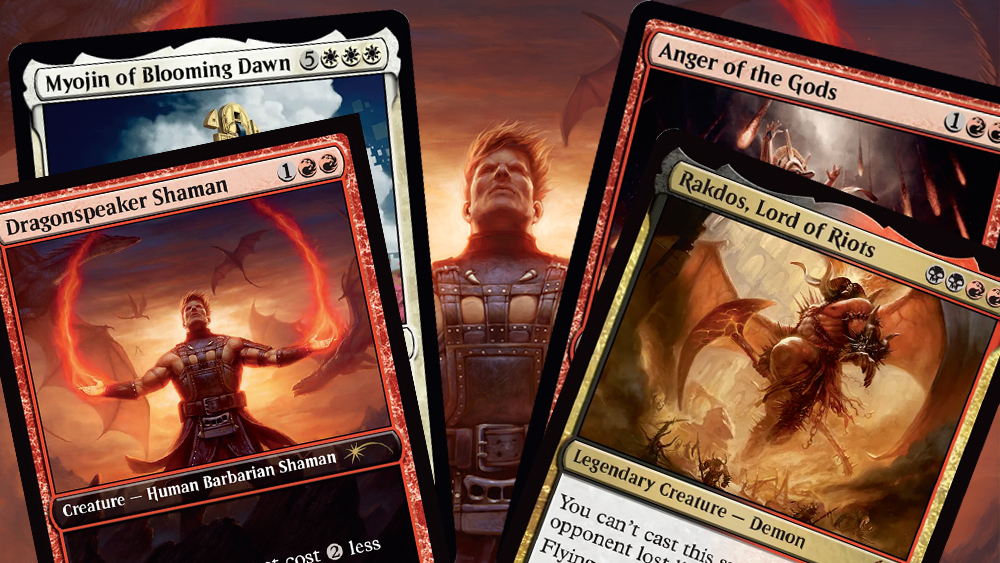
Freelance illustrator and concept artist Yigit Koroglu has poured his passion for all things science fiction and fantasy into an impressive career that has seen him working for the likes of Wizards of the Coast and Atomhawk Design. His projects have included art for a range of projects, including AAA games, but he's best known for illustrating Magic: The Gathering cards, which were also one of his first main inspirations to become an artist.
I caught up with him to learn more about his creative process, and why working in large teams is the key to continuously honing his skills as an artist. He also passed me some tips for how to create card art, which I'll share below.
If you're just embarking on your own artistic journey, see our guides to the best drawing tablets and the best laptops for drawing. We also have a feature on the best digital art software.
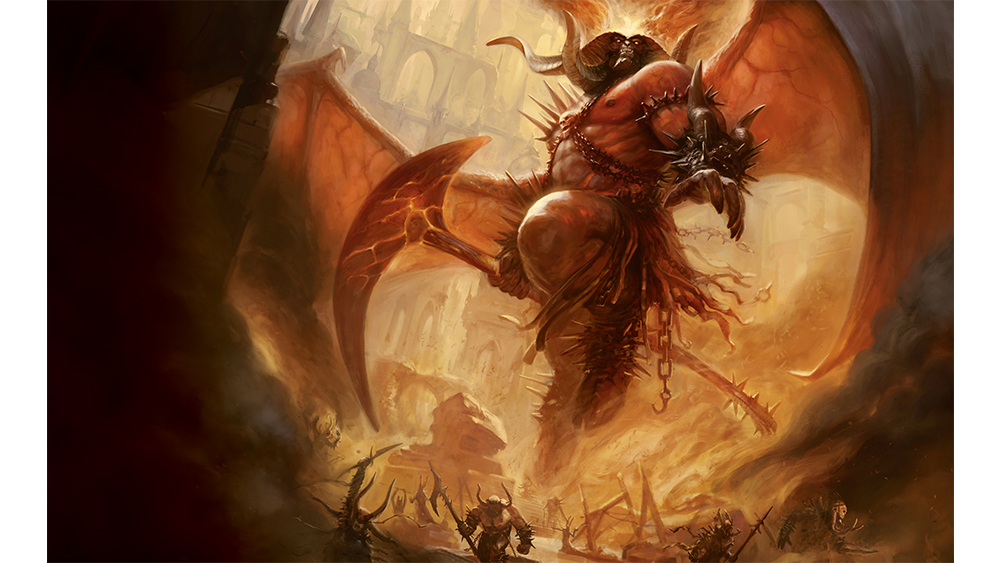
Tell us a little about your background as an artist. How did you get started and what has your career been like so far?
I have a bachelor’s degree in interior architecture, but after trying it for a couple of years I found out that it wasn’t my fit. I took some courses that introduced art and design, art history and drawing, and I was already drawing fantasy art as a hobbyist when I was a student.
Digital art was getting popular when I graduated, so I gave it a try and realised that being a fantasy artist, using a tablet, was the route to take for the rest of my life. I started to get commissions and contributed to projects of various sizes, including indie games, mobile games and book illustrations.
One of them was to design the protagonist for a short animation film called The Begun of Tigtone. Then in 2018 that short film got the green light for a two season run to be aired on Adult Swim. I painted nearly 200 characters, creatures and props for the series.
During the same year I started creating card art for Magic: The Gathering, which had been my childhood dream. In 2022 I began working for Atomhawk Design and relocated to the UK from Turkey. I’ve worked there for three years.
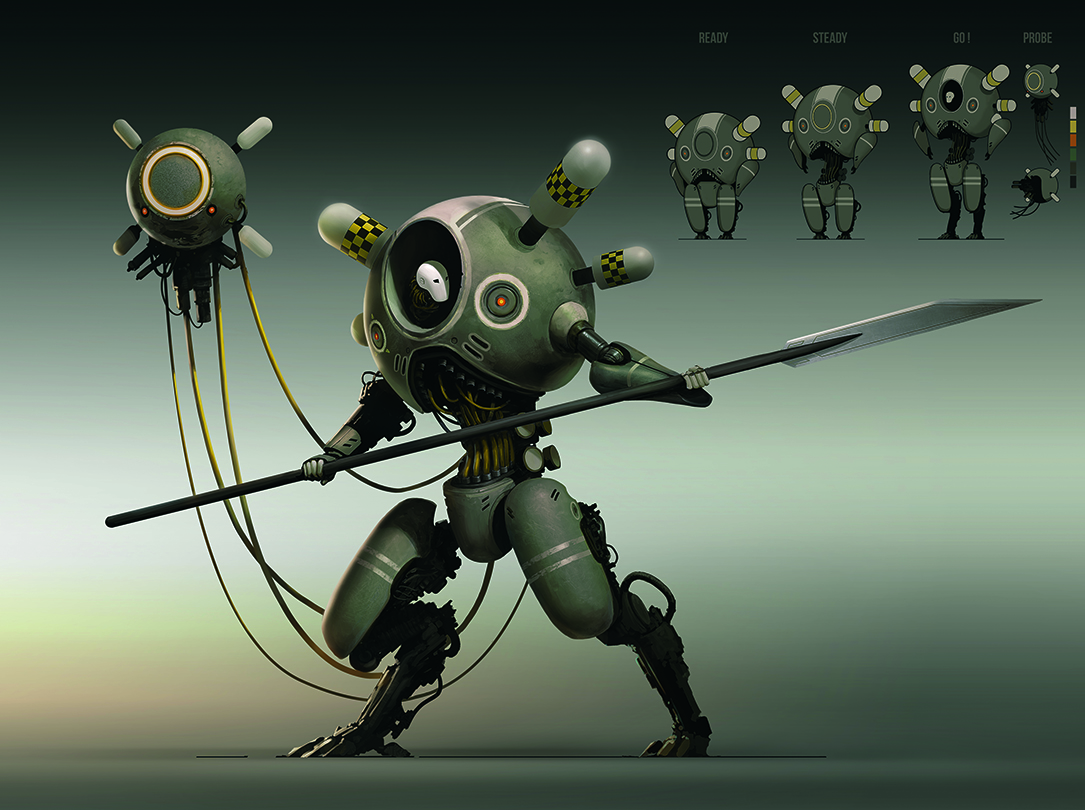
How has your art developed over the years, and what has driven those changes?
I’ve been a freelance illustrator and concept artist for a decade. I would describe my style as realistic with a touch of stylisation.
Early on, I aimed for purely realistic results, but over time I discovered that adding some stylisation made my work more distinctive. I love hand-painting every element in a piece because I believe that the texture of brushstrokes helps to make the artwork recognisable; you can think of brushstrokes as your personal watermark.
After joining Atomhawk, I had the chance to work alongside incredibly talented artists with exceptional skills and great personalities. It made me realise that no matter how long you’ve been in the industry, there’s always so much more to learn.
I studied a lot of anatomy, picked up new techniques to speed up and smooth out my workflow and, most importantly, learned how to collaborate effectively within a team to achieve better results.
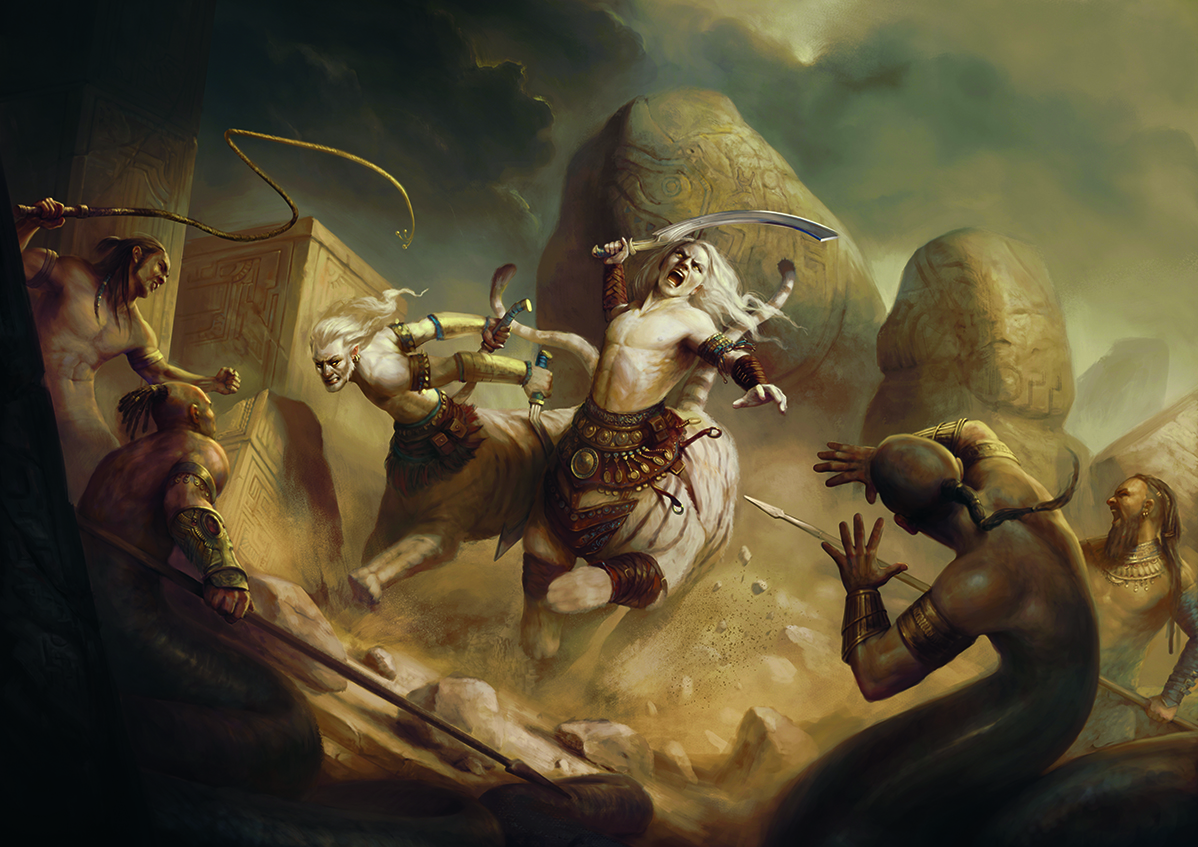
You’ve illustrated plenty of stunning Magic: The Gathering cards. How did you get into doing this? Have you always been a fan of the game?
When I was very young, I came across a booster pack from one of the earliest Magic sets and instantly fell in love with the artwork. Without even knowing what the game was about, I bought the pack purely for the art.
I kept buying more sets just because I admired the artwork, even though there was no one around to play the game with me. Collecting those sets filled with amazing art probably influenced my decision to pursue this profession.
Later, while illustrating for Paizo’s Pathfinder Adventure Paths, my art director Andrew Vallas moved to Wizards of the Coast to become an AD for Magic: The Gathering. He invited me to illustrate a Phyrexian Altar for the Ultimate Masters set. I completed the piece, they were happy with it, and I’ve been working as a freelance illustrator for WotC ever since.
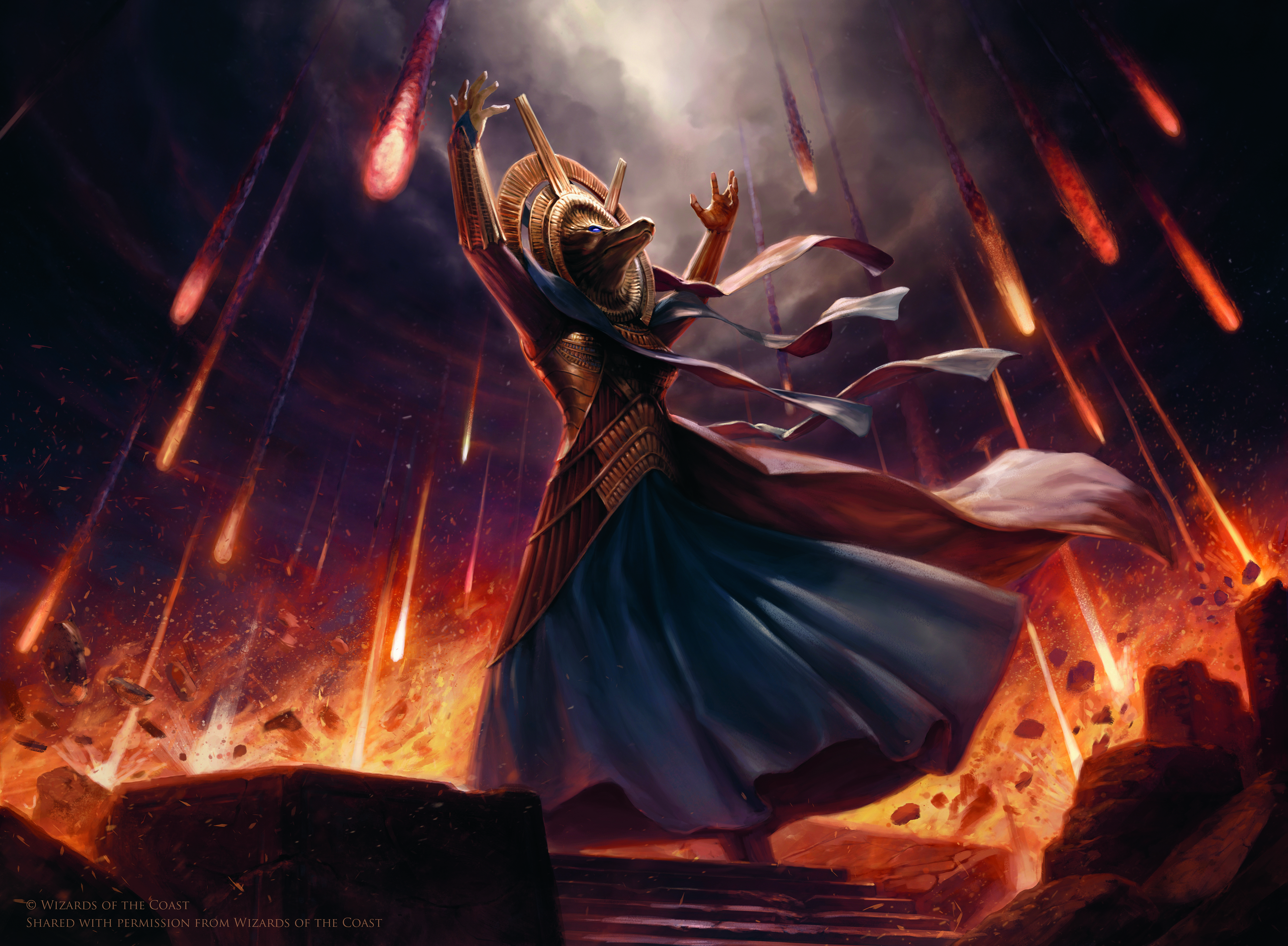
Can you tell us a bit about the card art creation process? Are you given a brief to work from, and do you need to be aware of how it fits into a larger deck or release?
This is definitely the best part of working on Magic: The Gathering! We receive highly confidential concept guides that provide detailed answers and an in-depth presentation of the world we’re illustrating for.
While respecting confidentiality, I can say that the art directors really value each artist’s unique style and encourage different creative approaches within the brief.
The challenge lies in the small size of the printed card: silhouettes need to be instantly recognisable, and compositions must support the narrative while remaining dynamic. Even though we don’t always know the exact power of the card or its name in the game, our job is to create the best illustration possible.
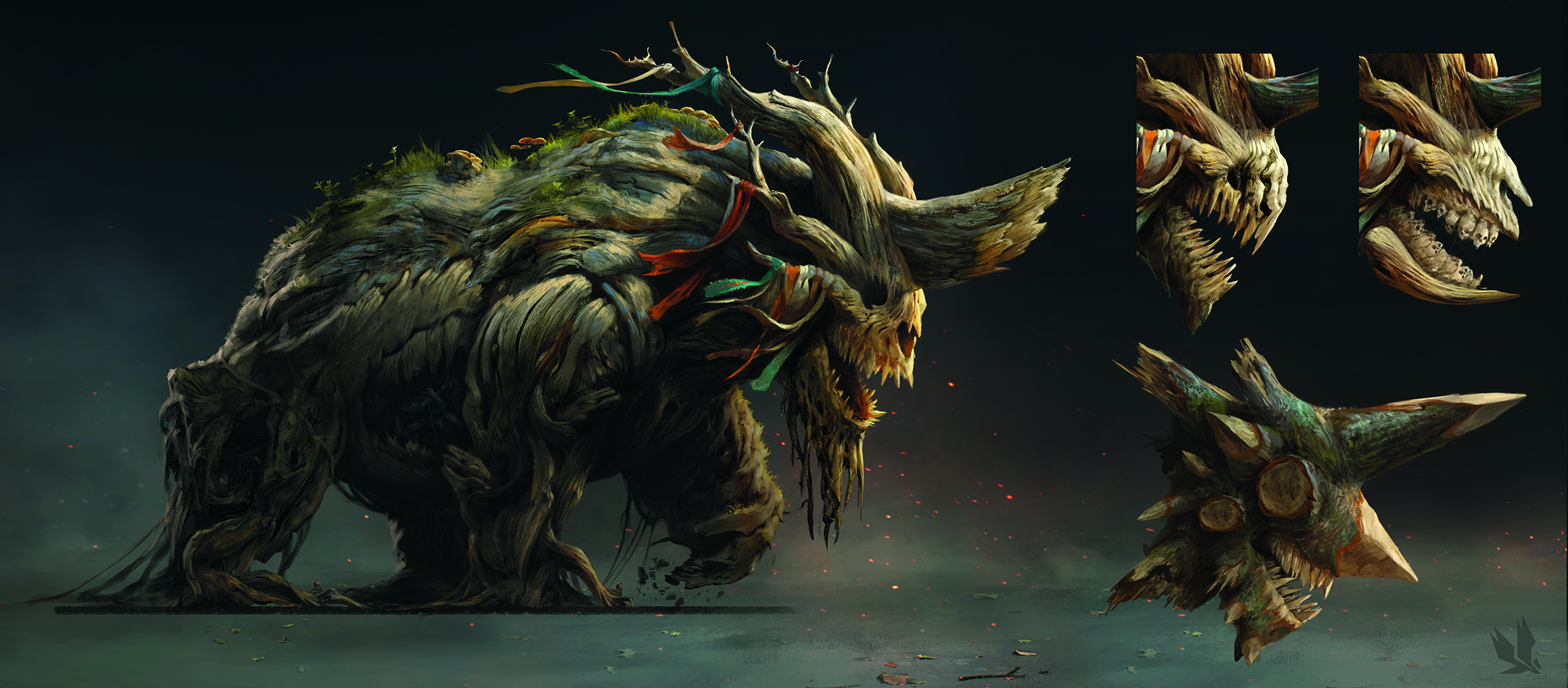
What is it about science fiction and fantasy that particularly appeals to you as an illustrator?
When I was a child, the video games I played – mostly RPGs – had very primitive graphics, leaving much of the story to my imagination. This encouraged me to visualise the game’s world in my mind by studying the cover art and handbook illustrations, filling in the missing details myself. You could think of it as an organic version of Generative Fill! I believe this greatly boosted my creativity.
The ‘untold’ elements in science fiction and fantasy fuelled my imagination, and as I grew, I developed the skills to bring what I envisioned in my mind to life through illustration. While many see science fiction and fantasy as escapism, I believe they’re deeply rooted in human nature: our ongoing quest to understand the unknowns of the past, and a blueprint for how we might progress to uncover the mysteries of the future.
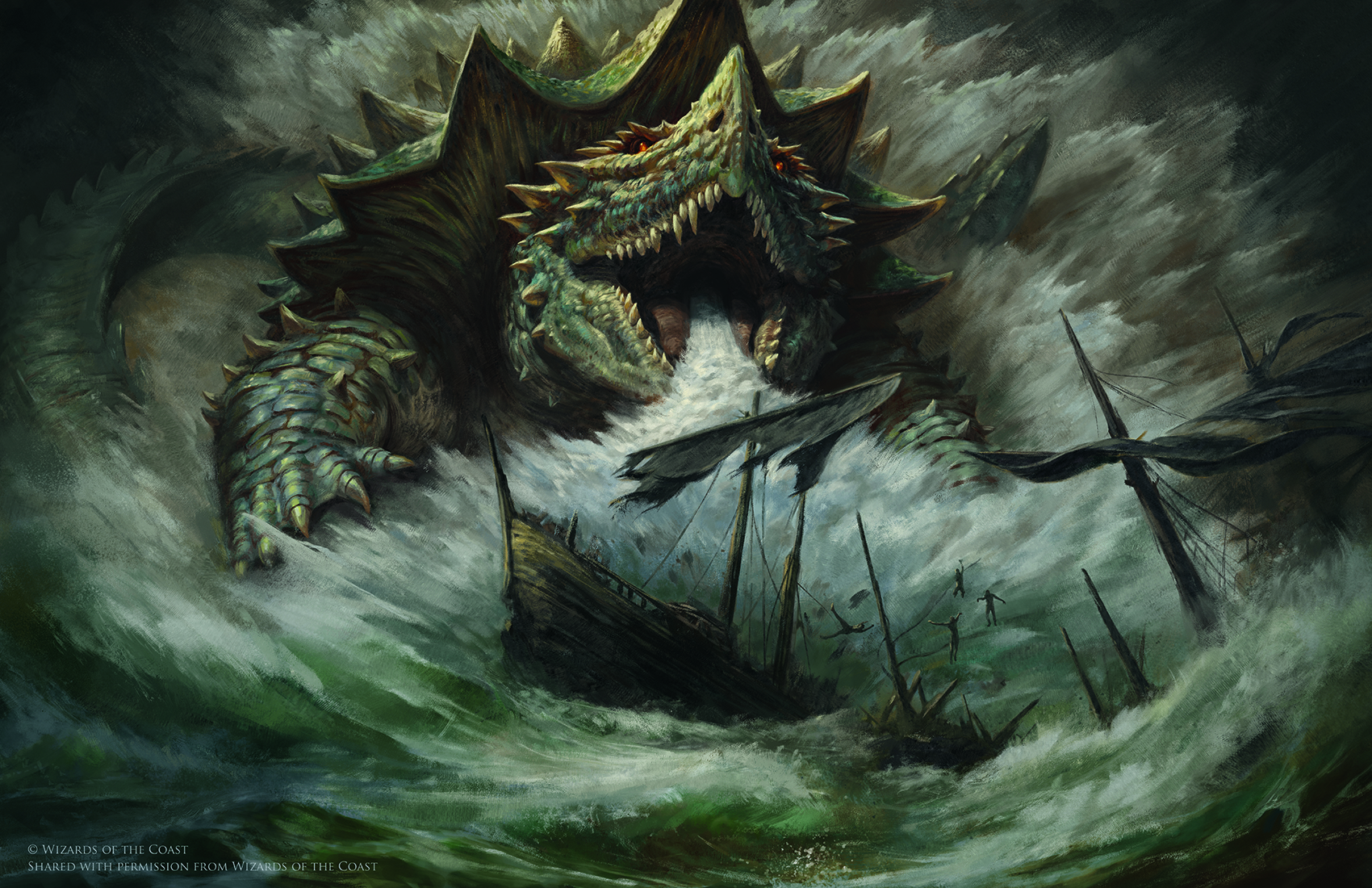
Your work on AAA games involves working under pressure and to tight deadlines. How do you stay on top of everything while maintaining consistently high standards?
Working on AAA games can definitely be stressful, but at its core it’s all about teamwork. Everyone on the team needs to be fully dedicated and constantly pushing their limits.
Each person brings different strengths and weaknesses: one might be an incredible designer but a bit introverted when sharing ideas; while another might work more slowly but offer valuable feedback. The key is to highlight your teammates’ strengths and support them in areas where they struggle.
The team leader plays a crucial role by understanding each member’s abilities and assigning tasks accordingly. When these elements come together, and the team produces great work, all that’s left is to hope that the players are kind in their reception.
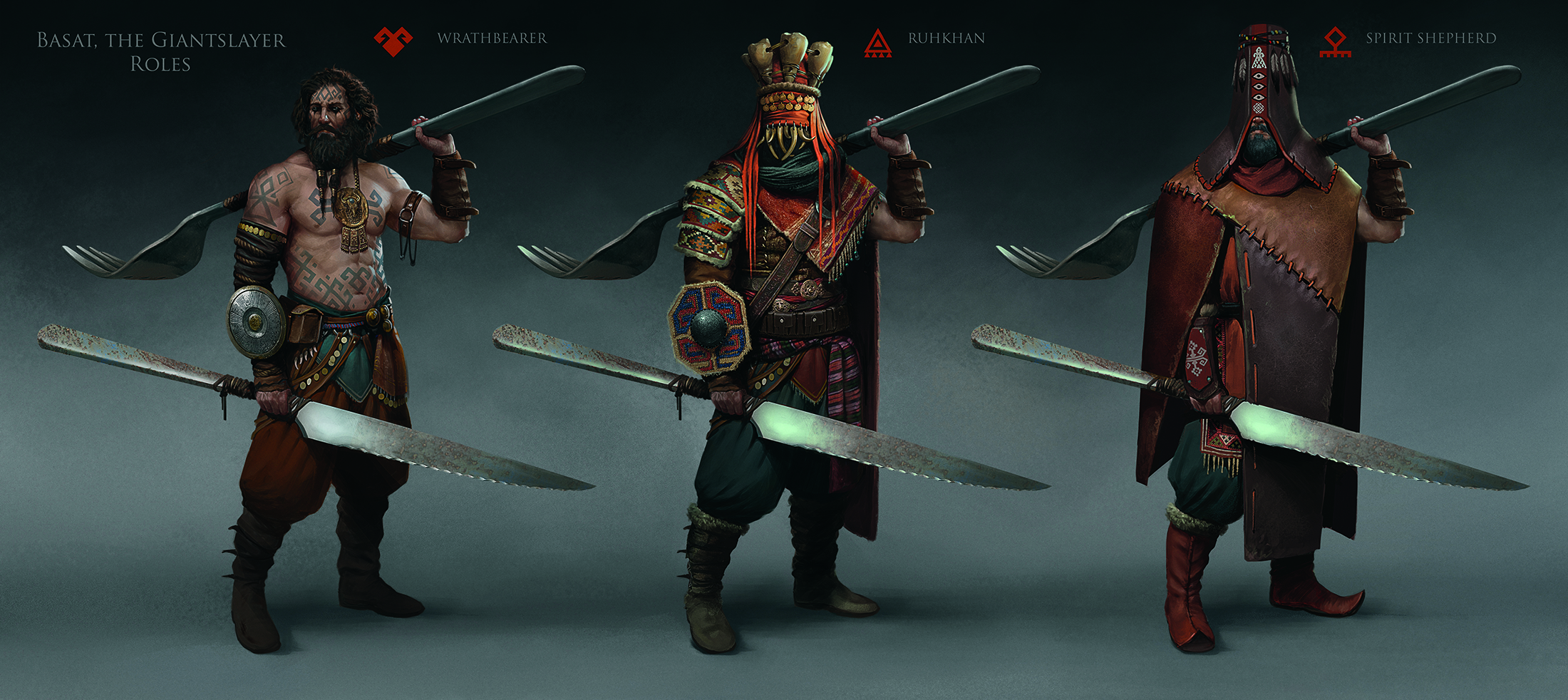
As a character artist, how do you go about capturing the personality of your subject?
Before starting sketches, every concept artist should prepare a thorough moodboard. Gathering references helps your brain make connections and clarifies the character’s direction. Think of it as a set of visual hashtags. Spending as much time on the moodboard as on sketching helps ideas flow naturally. When sketching, begin with silhouettes to capture the character’s personality.
Choose dynamic poses and expressive facial features to convey mood. For example, a hand on the hip and a downward gaze can suggest assertiveness, while crossed arms may indicate resistance to new ideas. Warhammer 40,000’s Space Marines are a great example: although they wear almost identical armour and have similar roles, their body language and expressions give each soldier a distinct personality that feels real and relatable.
From a technical standpoint, use foreshortening, cast shadows and reflected light to give your characters volume and depth. Details such as clothing, armour and props should feel connected to the character’s world and their environment. Applying the Large-Medium-Small principle helps to establish a clear visual hierarchy.
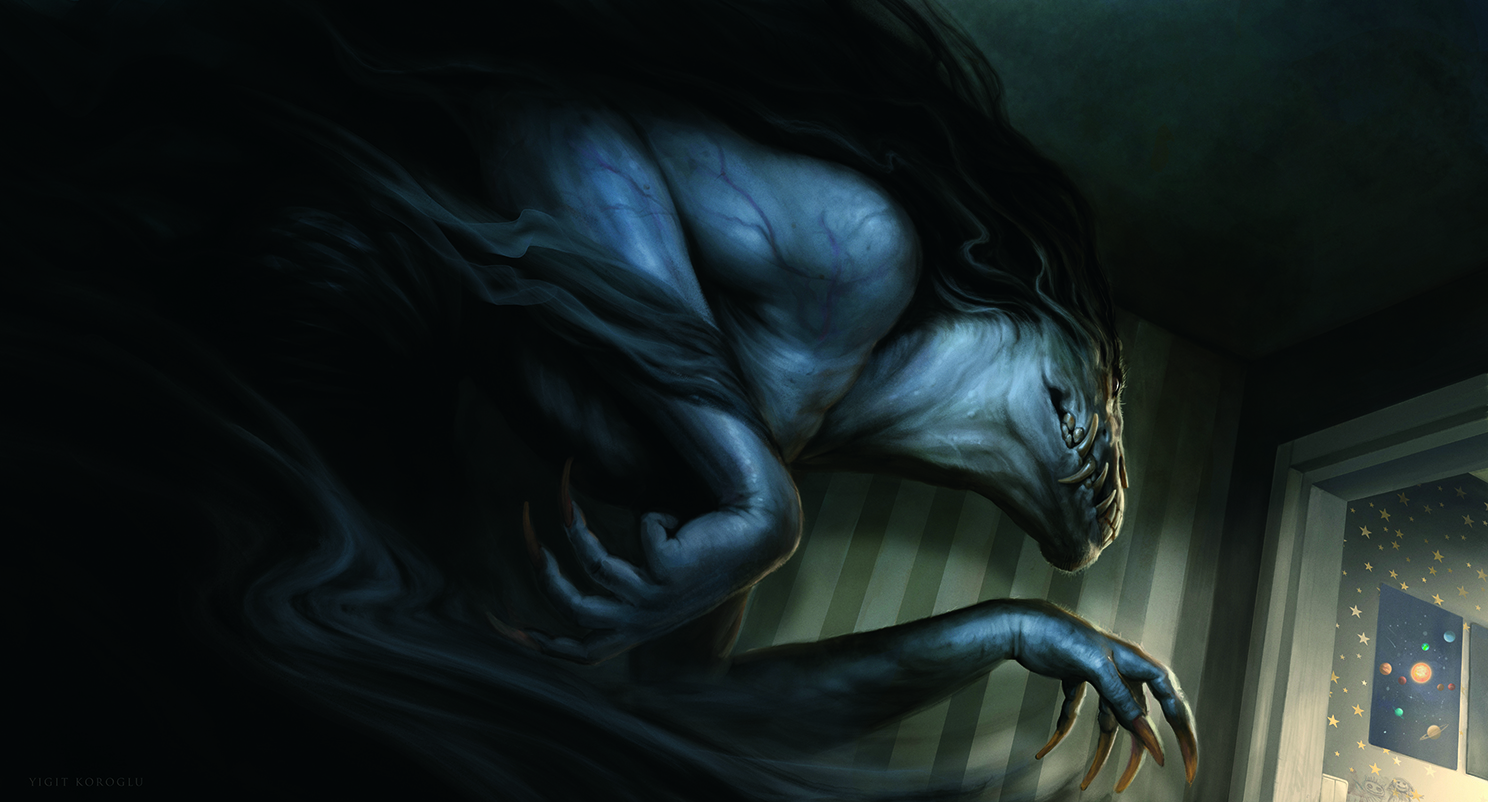
Of all the work you have created, what are you most proud of and why?
I think the illustration I created for Magic: The Gathering’s Kamigawa: Neon Dynasty set, Myojin of Blooming Dawn, is the piece I’m most proud of because it allowed me to convey a cherished memory from my childhood through a fantasy illustration. When I was around seven or eight, there was a meadow between our house and school that, in springtime, was filled with waist-high flowers.
I would walk through them, surrounded by butterflies, sunshine and a gentle breeze carrying the scent of grass. That moment felt almost magical and left a lasting impression on me. While creating this illustration, I used that memory as a reference (the flowers were actually yellow), and I’m very pleased with how it turned out.
What advice would you give to other artists thinking of becoming concept artists and illustrators?
It’s a challenging field these days and it can feel intimidating at times, but as long as you truly enjoy what you’re doing, success (however you define it) will eventually follow. For aspiring concept artists, no matter what tools you use, the key is to generate original, functional ideas quickly rather than spending too much time perfecting polished but generic concepts.
I always recommend carrying a sketchbook to jot down even your wildest or seemingly silliest ideas whenever inspiration strikes. You’d be surprised how creative you can get in the most unexpected of moments and places. Illustrators should focus on storytelling and mood – these are essential.
You only have a few seconds to grab the viewer’s attention, so your piece needs to convey emotion and narrative immediately. Fundamentals like anatomy, composition and colour are crucial. Even untrained eyes can sense when something’s off, so make sure everything works in harmony to support your visual story.
How to make card art
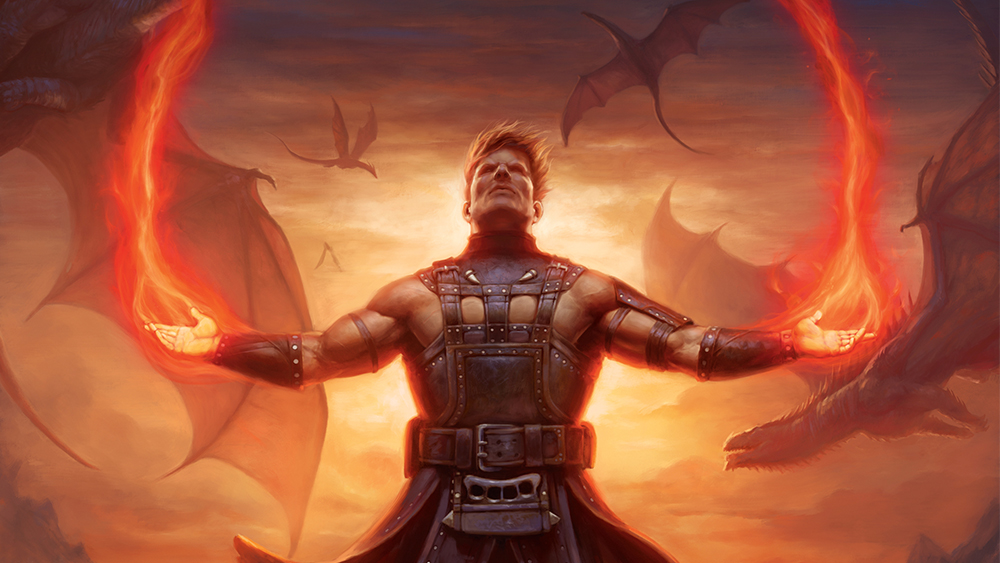
Tempted to break into the world of trading card games? Yigit shares what to keep in mind when creating art for the format.
Size
Trading cards are small, and the artwork on them is even smaller. While high-quality rendering is essential, avoid spending hours on tiny details that won’t be visible. Focus on the main subject and overall impact.
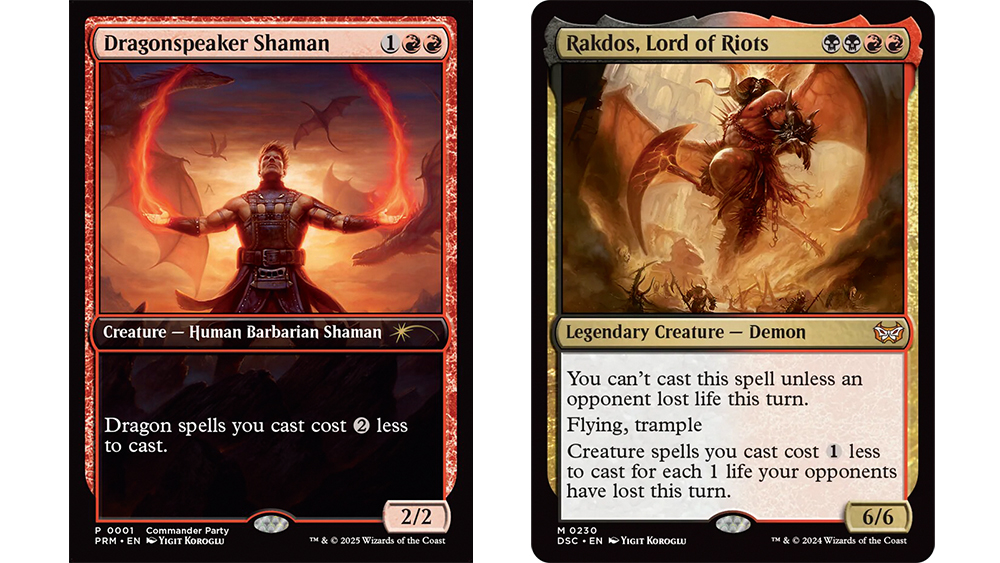
Silhouette
The subject should be instantly recognisable. A clear, strong silhouette will help the character or creature to stand out at a glance.
Colour
This plays a major role, especially in games like Magic: The Gathering. While the image shouldn’t be strictly monochromatic, the palette should still reflect the card’s mana type or thematic tone.
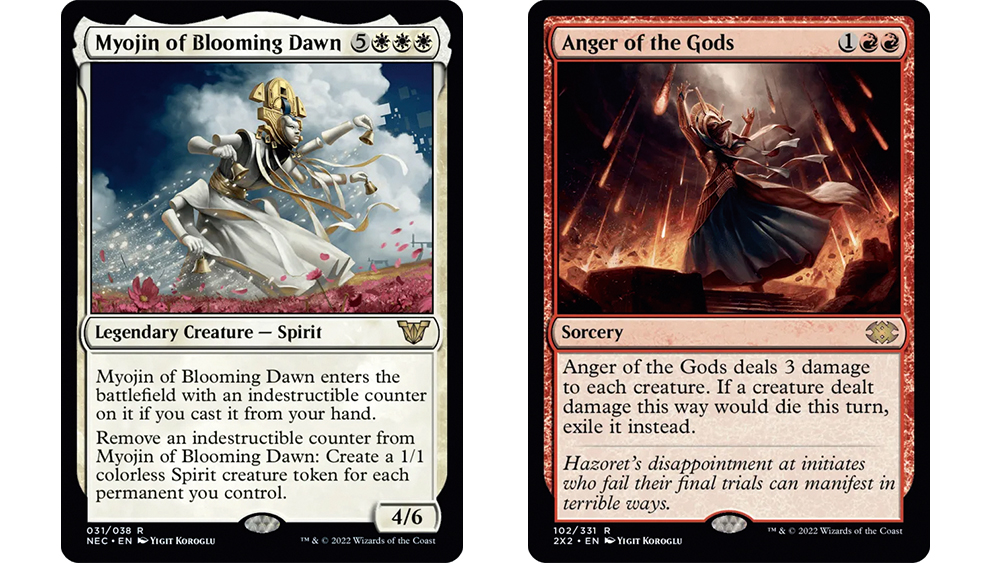
Values
Value structure is fundamental, not just in trading card art, but in all visual art. Strong values give volume, enhance readability and make the illustration immediately understandable.
Context
Creating a visually striking image is important, but it must also serve the purpose of the card and fit within the narrative and design constraints of the brief. Even the most beautiful piece falls short if it doesn’t serve its intended function.
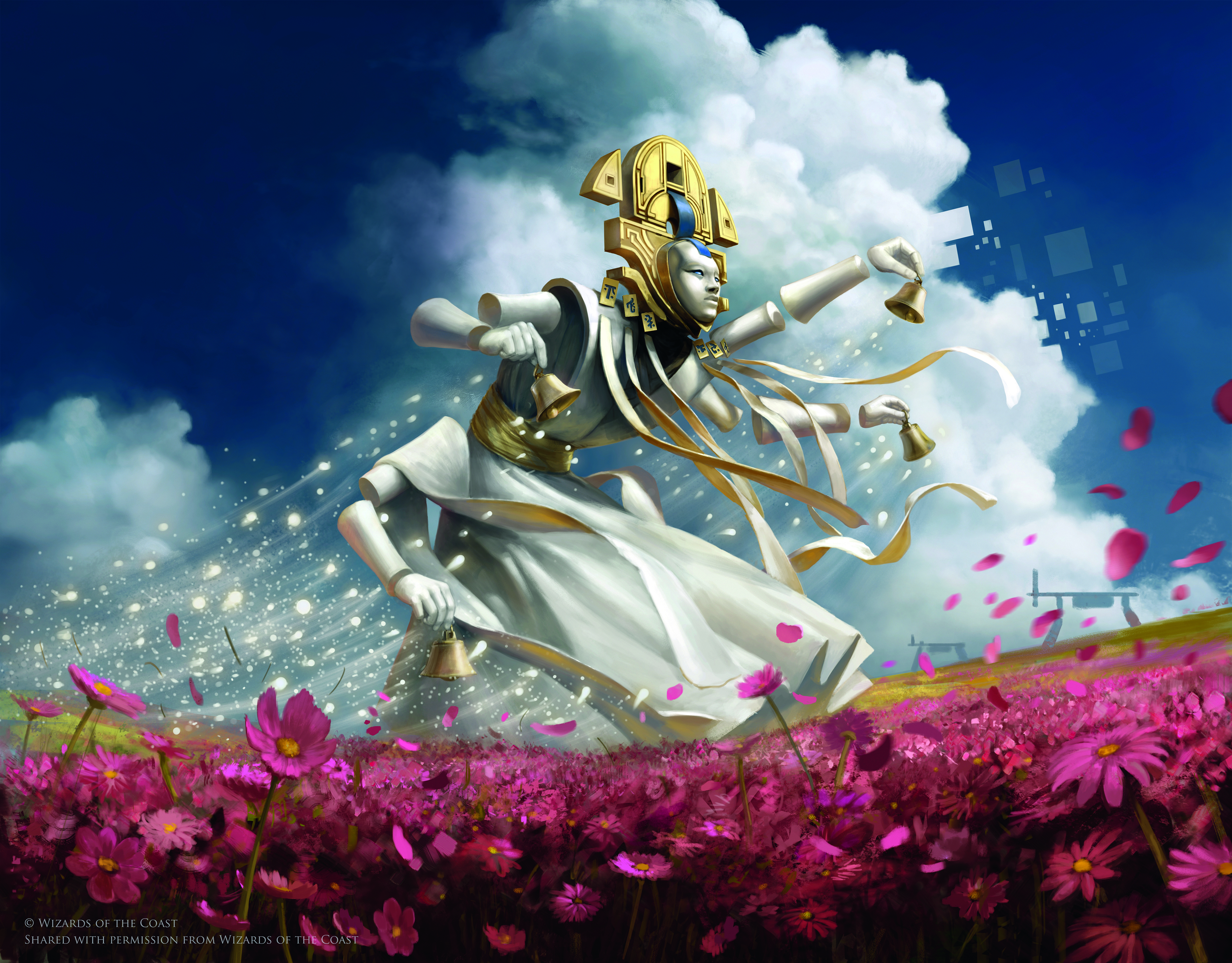
I created Myolin of Blooming Dawn is a piece for Magic: The Gathering’s Kamigawa: Neon Dynasty, inspired by Japanese mythology and a childhood memory. I started by building a huge moodboard focused on Japan; there was so much visual richness that it was impossible not to be inspired. Since I was given a written brief but no visual reference for the Myojin character, I had full creative freedom to design it from scratch.
I began with black and white shape and value sketches instead of line art, which is how I usually work. Then I added colour washes and used a few Overlay layers to push the mood further. The colour palette was different from my usual soft, muted colours in the front, contrasted with bright whites and deep blues in the back.
For the flowers, I only painted a few shapes clearly – the rest are just loose brushstrokes, giving the illusion of a full meadow. Looking back, I’d tweak a few areas, but I’m proud of the result
Daily design news, reviews, how-tos and more, as picked by the editors.
See more of Yigit's art on his website.
For advice for your own art, see our tips for using light and shadow to draw the body.
This article originally appeared in ImagineFX. Subscribe to ImagineFX to never miss an issue. Print and digital subscriptions available.
You must confirm your public display name before commenting
Please logout and then login again, you will then be prompted to enter your display name.
